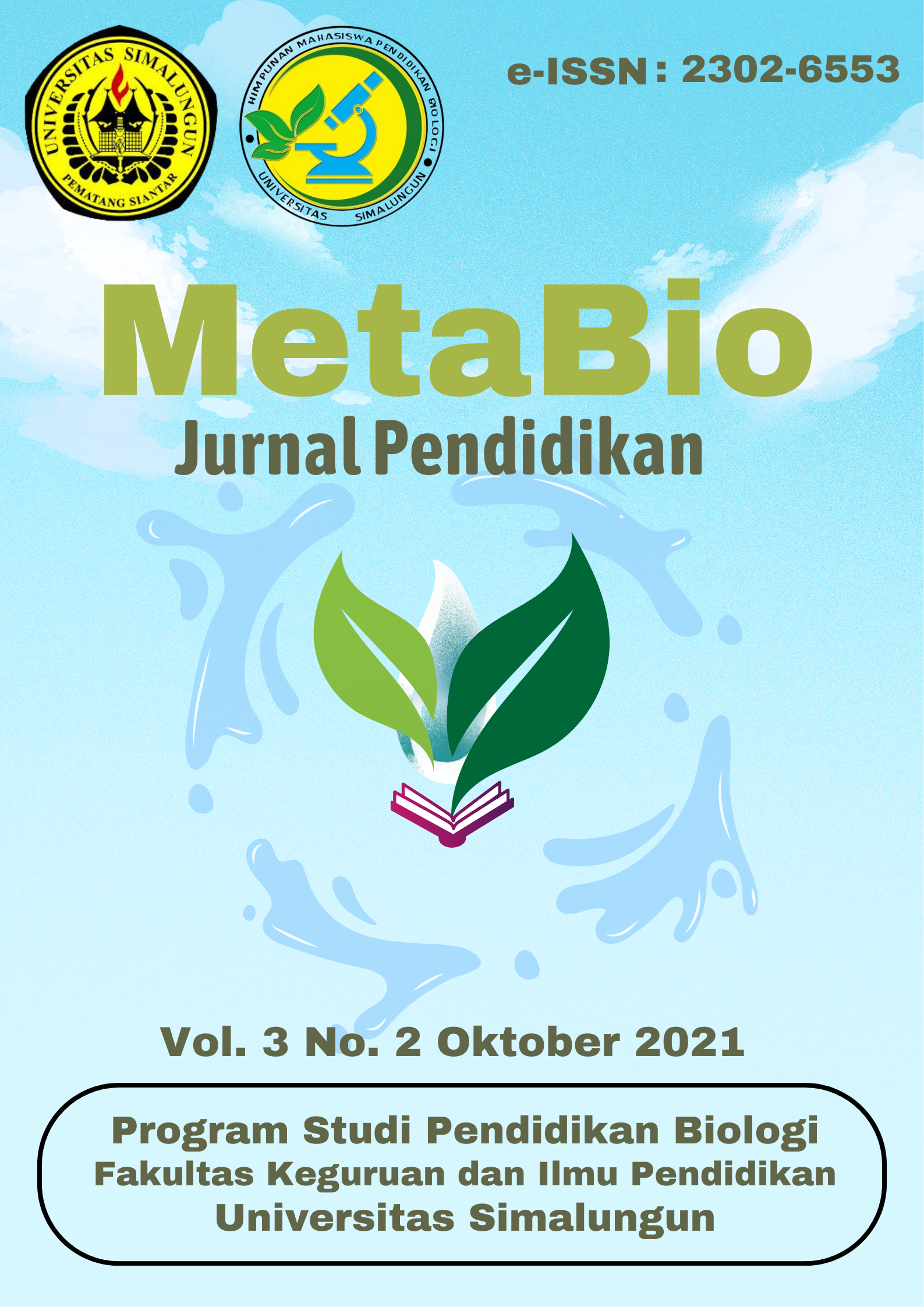ANALISIS KESULITAN BELAJAR SISWA DALAM MEMAHAMI MATERI SISTEM REGULASI MANUSIA DI KELAS XI SMA SWASTA KARTIKA 1-4 PEMATANGSIANTAR TAHUN AJARAN 2020/2021
DOI:
https://doi.org/10.36985/xhw8bh45Keywords:
Kesulitan Belajar Siswa, Materi Sistem Regulasi ManusiaAbstract
This study aims to analyze students' learning difficulties in understanding the human regulatory system material in eleventh-grade students at Kartika 1-4 Private High School, Pematangsiantar. The population in this study was all eleventh-grade students, consisting of three classes, totaling 150 students. Sampling was conducted using cluster random sampling, with a 20% sample size, with 10 students from each class, totaling 30 students. The method used in this study was descriptive. Student learning difficulties were analyzed using instruments in the form of multiple choice tests and closed-ended questionnaires with a Likert scale. The results of the test data analysis showed that the average percentage of students' learning difficulties was 75.65%, categorized as weak, meaning students had difficulty understanding the human regulatory system material. The questionnaire results indicated that internal factors influencing student learning difficulties included interest and motivation (67.08%) interpreted as weak, and readiness and attention (63.33%) interpreted as weak. Meanwhile, external factors, including the family environment (75% of which was interpreted as weak), the school environment (71.94% of which was interpreted as weak), and the community environment (65.83% of which was interpreted as weak), concluded that aspects with weak interpretations had no effect on student learning difficulties. Furthermore, the time allocation aspect (39.33% of which was interpreted as strong) significantly influenced student learning difficulties. The average percentage of factors influencing learning difficulties was 63.75%.
Downloads
Downloads
Published
Issue
Section
License
Copyright (c) 2024 Metabio: Jurnal Pendidikan Biologi

This work is licensed under a Creative Commons Attribution 4.0 International License.


